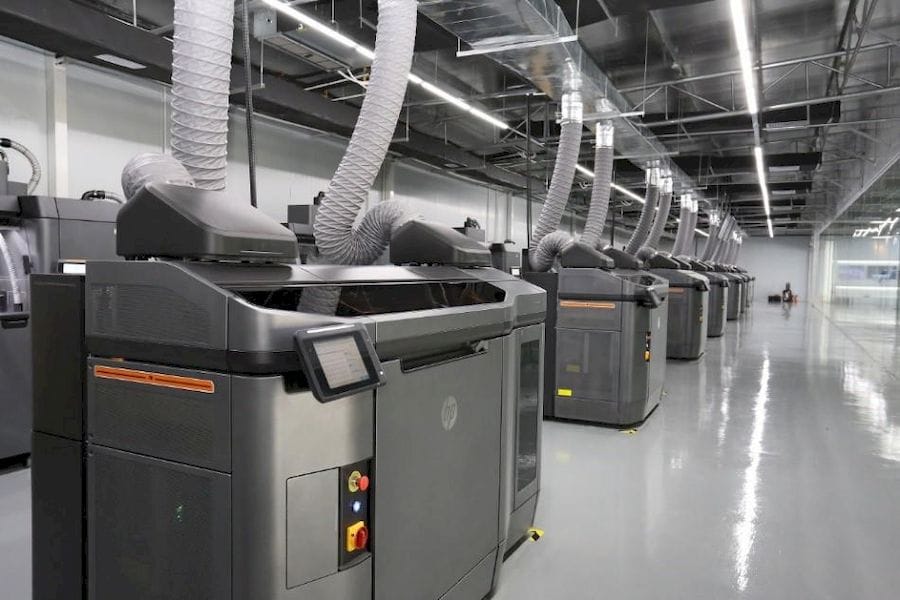
HP demonstrated why they have a significant advantage over other 3D printer companies.
Earlier this month they opened a manufacturing center in China. The Guangdong-located center will provide full production 3D printing services for the Asian market, using, of course, HP Multi Jet Fusion 3D printing systems. HP says the center will initially operate no less than ten systems, and this provides notable capacity.
HP has partnered with something called “Guangdong (Dali) 3D Printing Collaborative Innovation Platform” to build the operation. It’s my understanding that foreign firms must partner with local China businesses to legally operate in that country, and thus the need for a partnership. However, I’ve not heard of this particular company previously and suspect it may have been set up specifically for this purpose.
HP’s systems are designed for high throughput by employing large build chambers. By having ten systems, this center should be able to build a great deal of parts per hour, and thus open up the Asian market to HP’s technology for companies not able to acquire and operate their own systems.
Having a 3D print service bureaus in regional locations is not a new thing; Stratasys and 3D Systems have been doing that for many years, and also use them to leverage use of their own technologies, systems and materials. But those large 3D printer companies developed their 3D print service networks over decades. Typically they acquired previously operating 3D print services in strategic zones, gradually building up their networks.
But HP is still a newcomer to the 3D print business in many respects, and yet they’re able to launch a reasonably-sized 3D print service operation in a country distant from their origin.
I believe this is a striking example of HP’s true advantage in the 3D print industry: size. HP is an enormous enterprise, with vast research labs and operations in virtually all countries across the planet. It’s this that allowed them to relatively easily set up an Asian manufacturing center.
They already have significant operations in China, likely even in Guangdong. Only a phone call from head office would be required to get things started.
This is quite different from the experience smaller 3D print companies would encounter. They’d have no operations on the ground in China, nor any good idea of where to start. Learning how to do so would take quite literally years, and that would naturally put them behind anything that HP could muster.
There’s another advantage HP has in this game: cash. Consider a startup attempting to acquire TEN systems from HP to launch a similar operation: that would require a considerable amount of money to float the machines over a long period where they would gradually build up a set of clients whose requests might eventually break even. You’d need quite a bit of funding to keep that operation running until break even is achieved, and HP can very easily do that. But a startup might not.
I suspect this is only the beginning for HP in this business aspect. If they prove successful in China, I wager they will start setting up quite a few more similar 3D print operations in many regions. All of this activity will drive more usage of their technology and push forward sales of equipment as service users eventually graduate to buying their own machines.
Via HP

